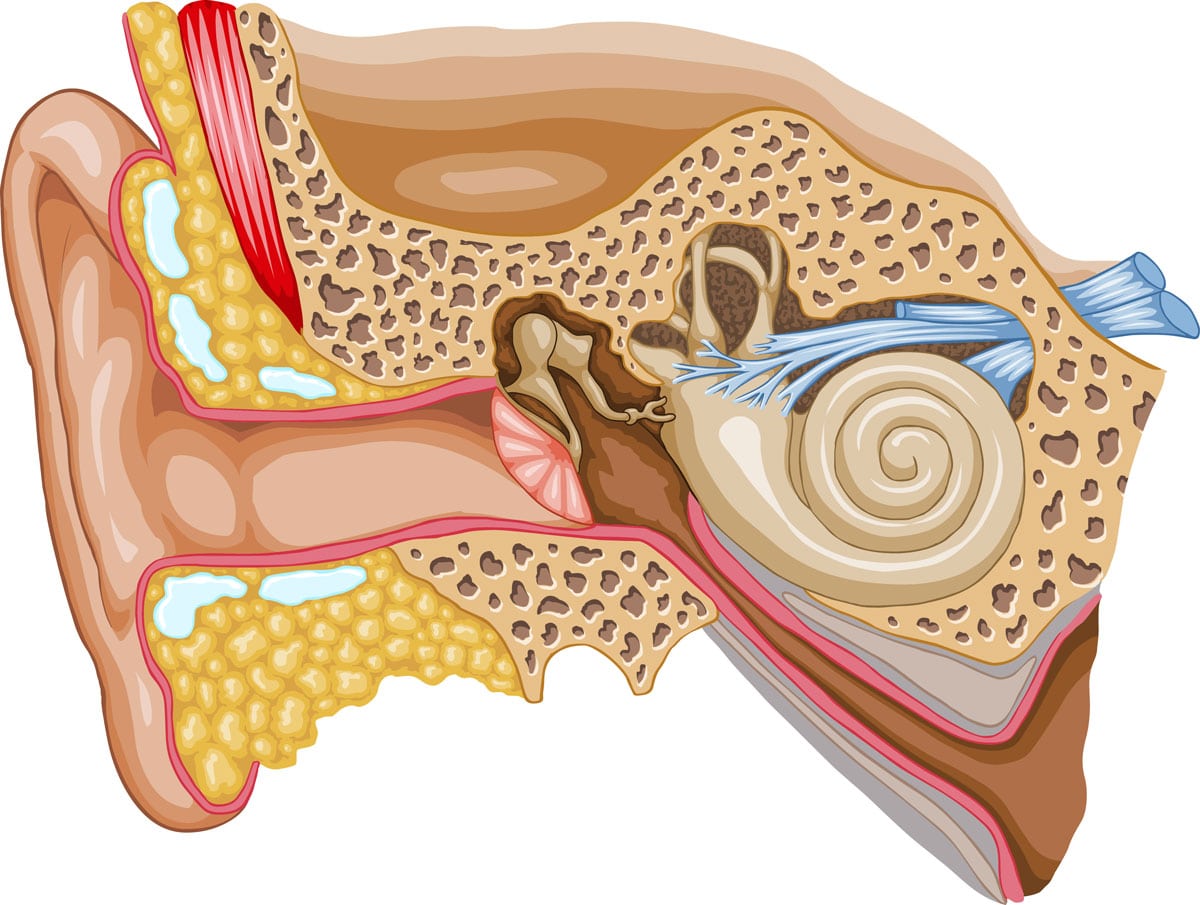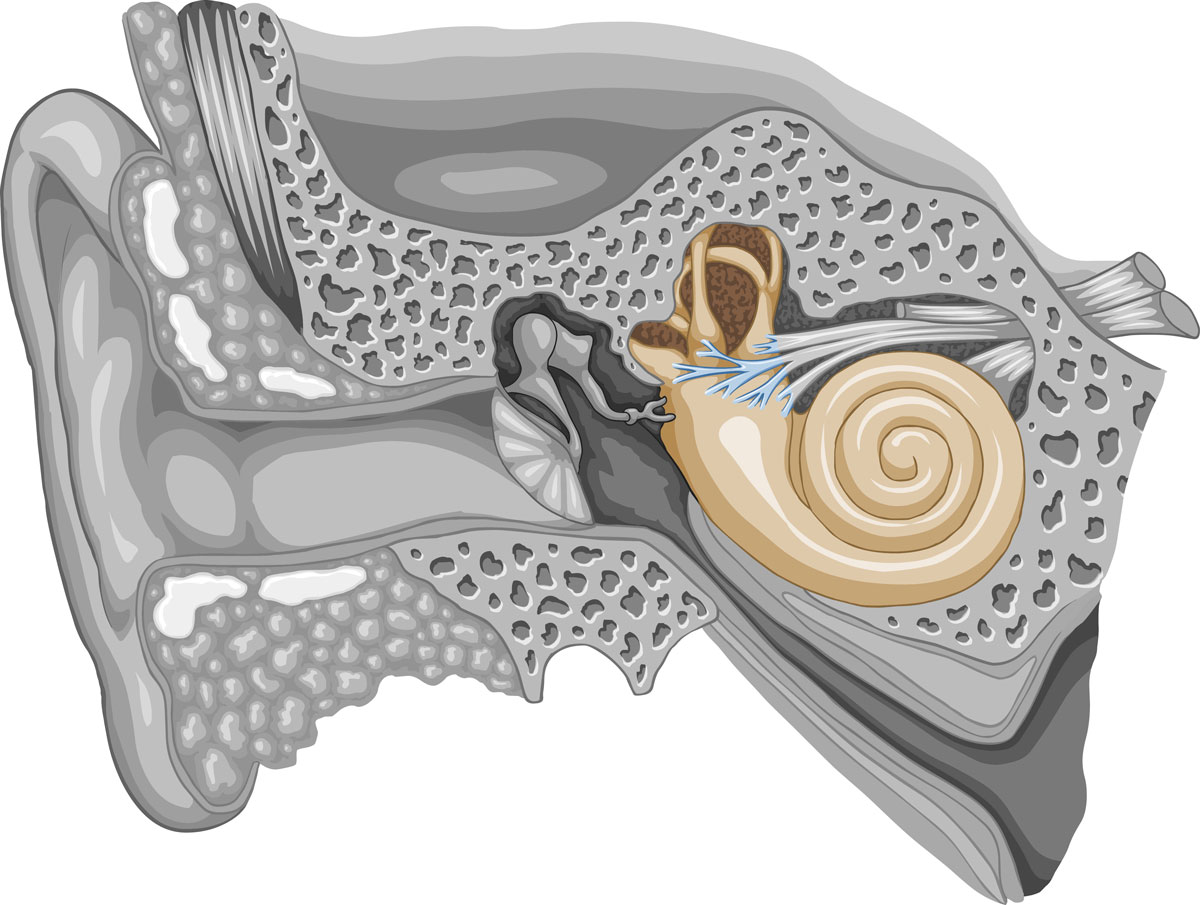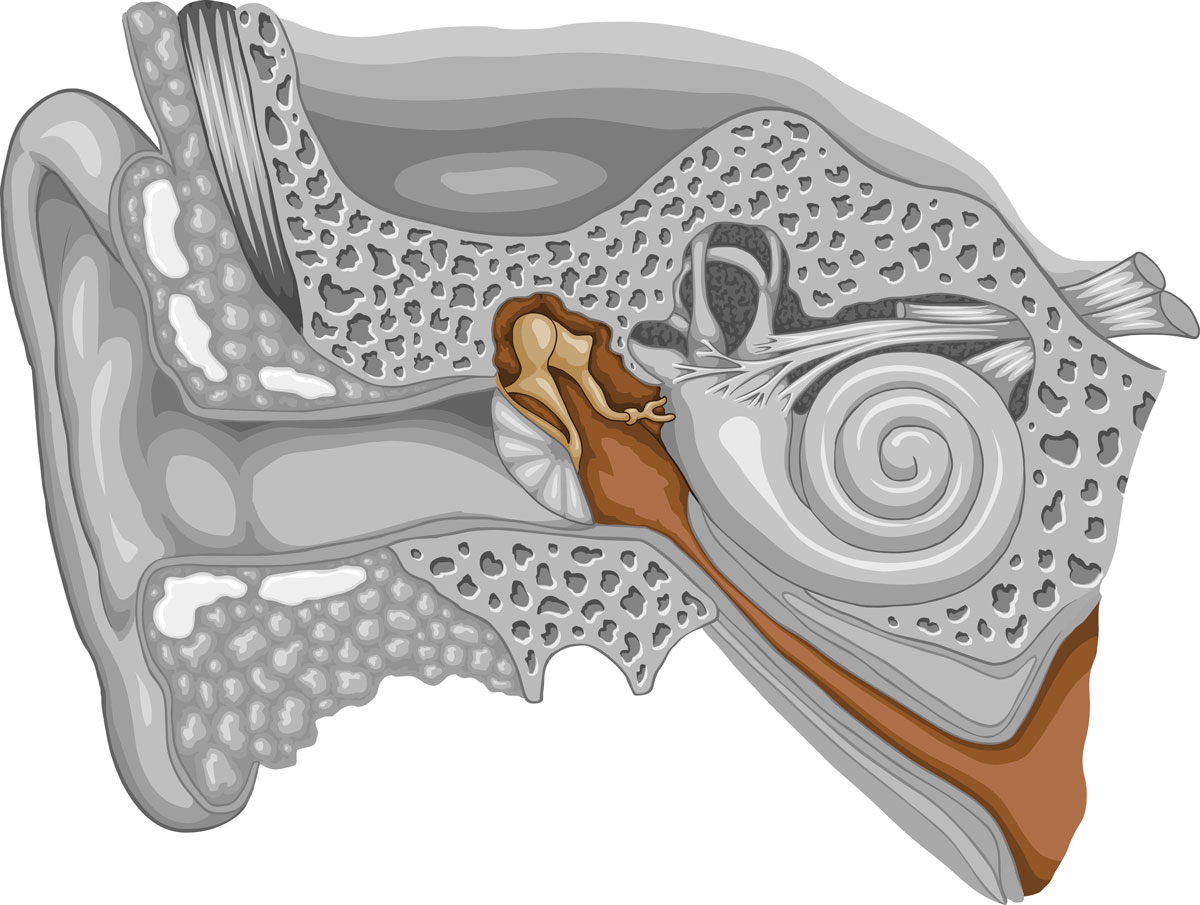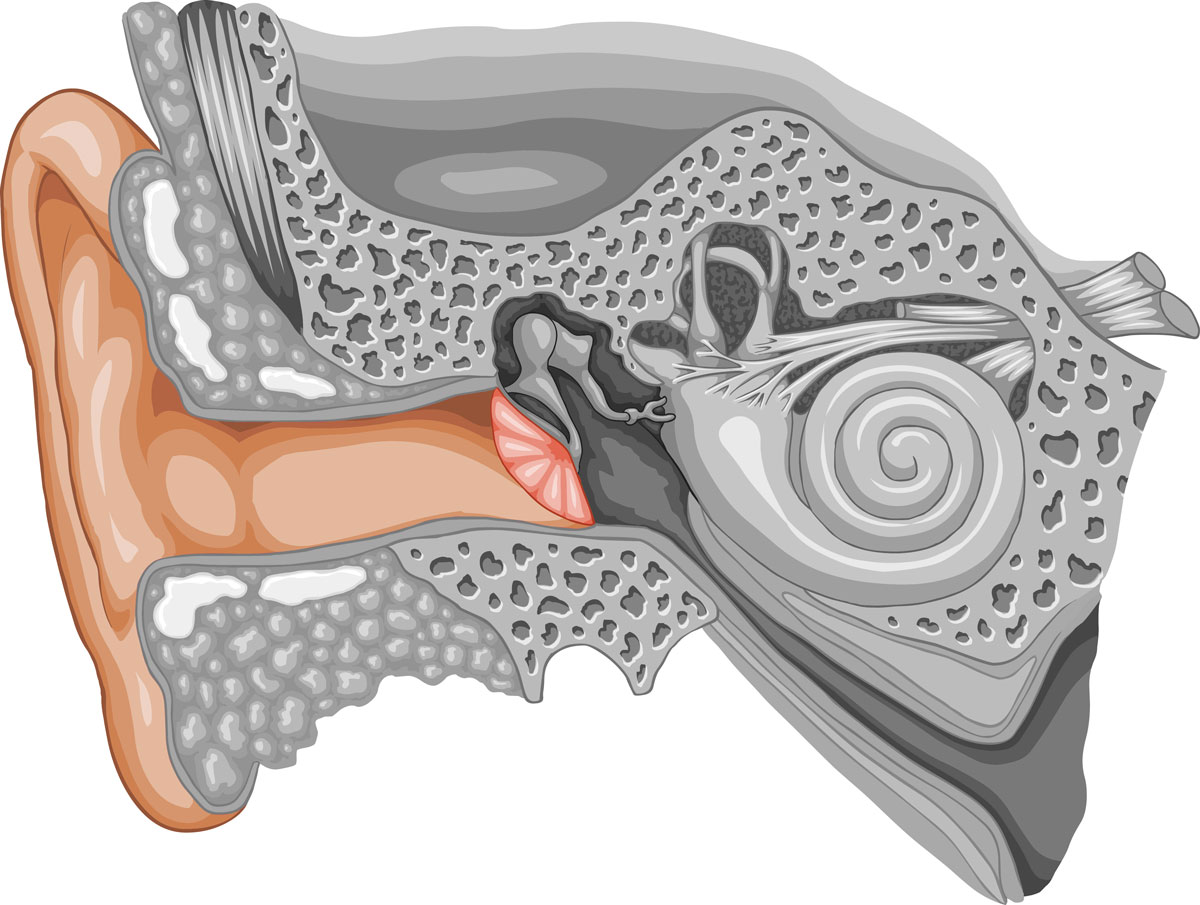The ear is a surprisingly complex organ responsible for not only collecting and processing sounds and transmitting them to the brain for interpretation, but is also crucially involved in making sure your balance and motor skills are in sync. Many take hearing for granted, but understanding the process is the key to treating hearing loss.
Parts of the Ear and Their Functions
The ear consists of three sections: the outer ear, middle ear and inner ear. Each plays an important role in hearing.
Outer Ear Function
The outer ear is called the auricle or pinna. It is the external portion visible to others and is responsible for collecting sound waves and funneling them into the ear canal. There, they are amplified and sent to the tympanic membrane (eardrum), causing it to vibrate.
Middle Ear Function
The middle ear is the area between the ear drum and the inner ear. When the eardrum vibrates, it stimulates movement of the ossicles, a trio of tiny bones comprised of the malleus (hammer), incus (anvil) and stapes (stirrup). The stapes attaches to the oval window, which connects the middle and inner ears.
Inner Ear Function
The inner ear is comprised of the vestibule, the semicircular canals and the cochlea. The vestibular and the semicircular canals are involved in balance. The cochlea is a fluid-filled structure where vibrations transmitted from the eardrum cause hair cells to move. This movement is converted to electrical impulses that traverse the auditory nerve to the brain. There, they are interpreted as sound and the hearing process is complete.





How are Ear Conditions Diagnosed?
ENT doctors use a variety of methods to diagnose ear conditions, including lighted otoscopic tools, symptom-related testing and more technically advanced methods such as tympanometry (measuring the movement of the eardrum) and acoustic reflectometry (measuring sound reflecting back to the eardrum) among myriad other measures.

What Are the Most Common Causes of Hearing Loss?
A number of factors can cause hearing loss. The most common include aging, noise exposure, ear infections, excessive earwax, ear or head trauma, genetics, birth defects, benign growths or tumors, otosclerosis, Meniere’s disease and reactions to drugs.
Noise-Induced Hearing Loss
Noise-induced hearing loss is the most common type experienced by younger individuals. It can be caused by exposure to a single loud sound, such as a gunshot or explosion, or by continuous exposure to loud noise over a period of time.
It is estimated that 15 percent of Americans between the ages of 20 and 69 are experiencing hearing loss that is the result of exposure to excessive noise either at work or through recreational activities. High-risk pursuits include hunting, riding motorcycles, listening to music at high volume and even mowing the lawn.
Age-Related Hearing Loss
The most common type of hearing loss is presbycusis, or age-related hearing loss. Diminished hearing is a common side effect of aging, usually coming on gradually and affecting high-pitched sounds most frequently. It occurs as a result of natural changes in the inner ear of an individual over time.
An estimated one third of adults aged 65 or older experience age-related hearing loss; that number jumps to nearly 50 percent by the age of 75. Presbycusis usually affects both ears equally. It may be mild, moderate or severe.
What Are the 3 Types of Hearing Loss?
Conductive Hearing Loss
Conductive hearing loss occurs when there are problems with the ear canal, eardrum or middle ear. There are a variety of causes including structural deformities, fluid in the middle ear, ear infection, allergies, impacted earwax, perforated eardrum, foreign objects in the ear, otosclerosis and benign tumors. Conductive hearing loss may be correctable with surgery or medication.
Sensorineural Hearing Loss
Sensorineural hearing loss involves problems with the inner ear and is sometimes referred to as “nerve deafness.” Causes include aging, noise exposure, trauma, viruses, autoimmune disorders, otosclerosis, Meniere’s disease, malformations of the inner ear and tumors. Treatment for sensorineural hearing loss usually requires hearing aids.
Mixed Hearing Loss
This is a combination of conductive and sensorineural hearing loss and affects both the inner ear and middle or outer ear. Treatment options depend on the exact cause and may include a combination of medications, surgery and hearing aids.

How Is Hearing Loss Treated?
The most common treatment for hearing loss is a hearing aid. Your audiologist will work closely with you to take into account several factors – the type and severity of your hearing loss, your lifestyle, the size and shape of your outer ears and inner ear canals and your manual dexterity – in order to determine the best hearing device for you.
Contact